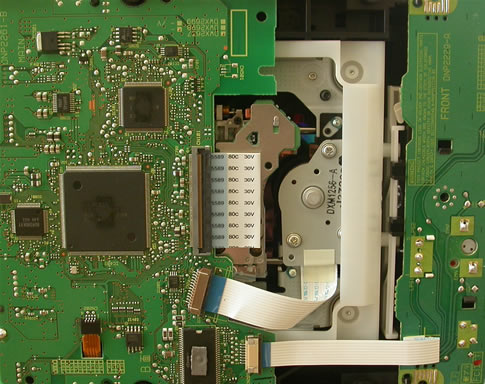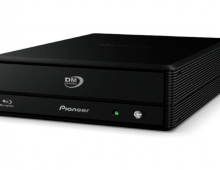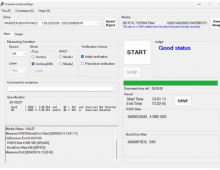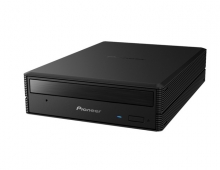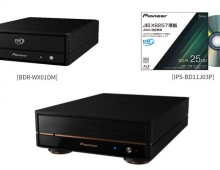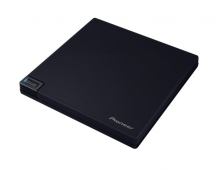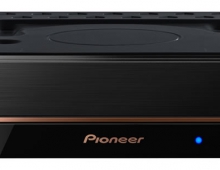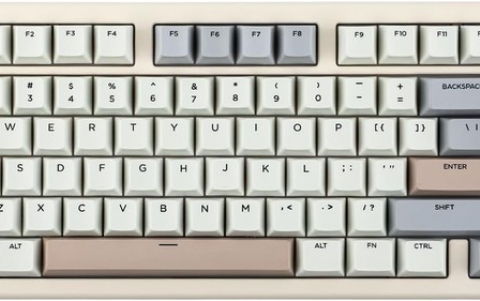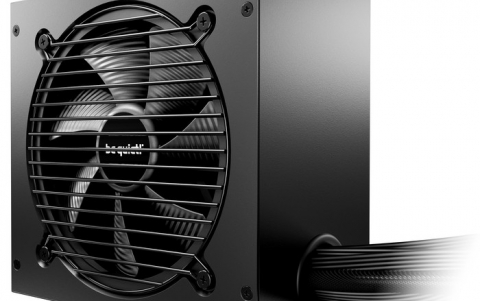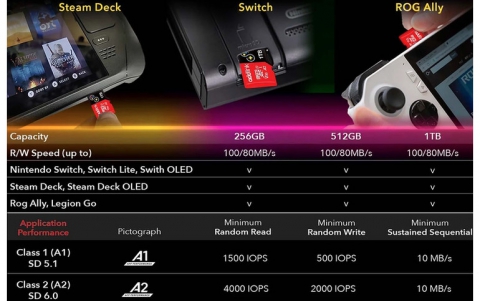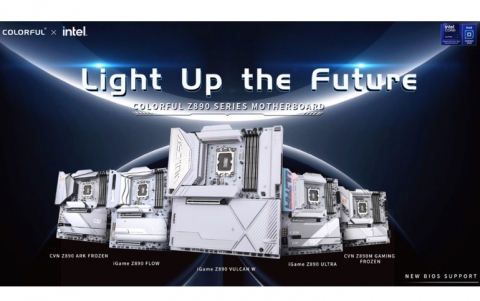Pioneer BDR-202
1. Introduction
Review Pages
2. CD - DVD Reading
3. CD Error Correction
4. DVD Error Correction
5. Ritek CDR
6. Taiyo Yuden CD-R
7. Verbatim CDR
8. Verbatim CDRW
9. DaTARIUS DVD Analyzer R 2x
10. CMC MAG AE1
11. MCC 03RG20
12. OPTODISC R016
13. ProdiscF02
14. ProdiscS05
15. TYG02
16. MKM 03RD30
17. MKM 01RW6X01
18. DAXON AZ3
19. MCC 004 (000)
20. Philips C08 000
21. PRODISC R04
22. PRODISC R05
23. RICOHJPN R03 (004)
24. YUDEN000 T03
25. MKM 003 000
26. MKM A03
27. MXL 16
28. TDKBLDRBA (000)
29. VERBATIMa (000)
30. TDKBLDWBA (000)
31. VERBATIM0 (000)
32. Playback Tests
33. Booktype and Overburning
34. Conclusion
![]() Pioneer was one of the first manufacturers to introduce the Blu-ray burning technology. Now Pioneer returns with its second generation Blu-Ray burning drive, the BDR-202 multi-burner. The drive supports up to 12X DVD+/-R media burning, up to 6X for DVD+/-RW, up to 4X for DVD+/-R DL, up to 24X for CDR/RW, up to 4X for BD-R and up to 2X for BDRE. It does not support BDR-DL (50GB) burning though, which was also the case with its predecessor, the BDR-101A.
Pioneer was one of the first manufacturers to introduce the Blu-ray burning technology. Now Pioneer returns with its second generation Blu-Ray burning drive, the BDR-202 multi-burner. The drive supports up to 12X DVD+/-R media burning, up to 6X for DVD+/-RW, up to 4X for DVD+/-R DL, up to 24X for CDR/RW, up to 4X for BD-R and up to 2X for BDRE. It does not support BDR-DL (50GB) burning though, which was also the case with its predecessor, the BDR-101A.

- Drive Features & Specification

The drive is available in both black and white and uses the SATA 1.0 interface.




Let's take a look at the internal components of the drive. Note that opening the drive case voids the warranty and should be avoided.
The drive uses the RENESAS R8J32500FPV chip, also found in the Pioneer BDC-202 BD-ROM drive.

- Nero Info Tool

- DVD Info Pro

Review Pages
2. CD - DVD Reading
3. CD Error Correction
4. DVD Error Correction
5. Ritek CDR
6. Taiyo Yuden CD-R
7. Verbatim CDR
8. Verbatim CDRW
9. DaTARIUS DVD Analyzer R 2x
10. CMC MAG AE1
11. MCC 03RG20
12. OPTODISC R016
13. ProdiscF02
14. ProdiscS05
15. TYG02
16. MKM 03RD30
17. MKM 01RW6X01
18. DAXON AZ3
19. MCC 004 (000)
20. Philips C08 000
21. PRODISC R04
22. PRODISC R05
23. RICOHJPN R03 (004)
24. YUDEN000 T03
25. MKM 003 000
26. MKM A03
27. MXL 16
28. TDKBLDRBA (000)
29. VERBATIMa (000)
30. TDKBLDWBA (000)
31. VERBATIM0 (000)
32. Playback Tests
33. Booktype and Overburning
34. Conclusion

